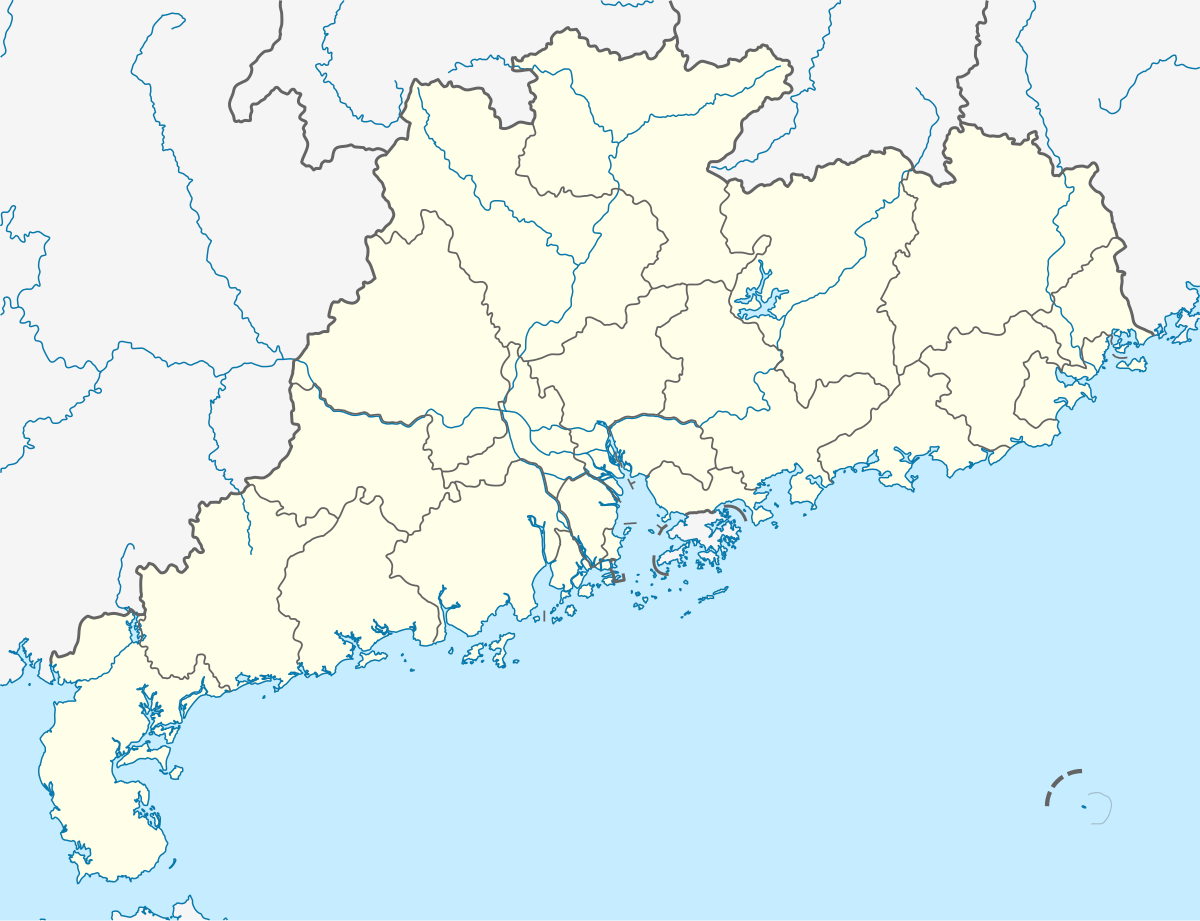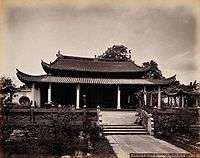Huaisheng Mosque
| Huaisheng Mosque | |
|---|---|
| 怀圣寺 | |
 | |
 Guangdong | |
| Basic information | |
| Location | Guangzhou, Guangdong, China |
| Geographic coordinates | 23°7′31.38″N 113°15′12.91″E / 23.1253833°N 113.2535861°ECoordinates: 23°7′31.38″N 113°15′12.91″E / 23.1253833°N 113.2535861°E |
| Affiliation | Sunni Islam |
| Architectural type | Mosque |
The Huaisheng Mosque,[1] also known as the Lighthouse Mosque and the Great Mosque of Canton,[n 1] is the main mosque of Guangzhou. Rebuilt many times over its history, it is traditionally thought to have been originally built over 1,300 years ago,[2] which would make it one of the oldest mosques in the world.[3]
In China, the most unusual feature of the mosque is its pointed 36-meter (118 ft) minaret,[3] the Guangta or Kwangtah. Although this meant the "Plain Pagoda" in reference to its unadorned surface,[4] it is also sometimes taken to mean "lighthouse" and gave the mosque its alternate name.[3] Somewhat similar "minimalist" minarets can be seen outside China, e.g. at the Khan's Mosque in Kasimov, Russia. The mosque was visited by Tim Severin's crew of the Sohar, that sailed into Canton from Muscat in July 1981.
History



Old Chinese Muslim manuscripts say the mosque was built in AD 627 by Sa`d ibn Abi Waqqas who supposedly came on his first Muslim mission to China in the 620s.[5] Although modern secular scholars do not find any historical evidence that Sa`d ibn Abi Waqqas actually visited China,[6] they agree that the first Muslims must have arrived to China within the 7th century,[6] and that the major trade centers, such as Guangzhou, Quanzhou, and Yangzhou probably already had their first mosques built during the Tang Dynasty, even though no reliable sources attesting to their actual existence has been found so far.[5][n 2]
It is very likely that the mosque existed during the early years of the Song Dynasty. The mosque was rebuilt in 1350 then again in 1695 after being destroyed in a fire. The Huaisheng Light Tower or minaret was built at an earlier period.[8] As late as the 19th century, the minaret tower was one of the major landmarks of Guangzhou.[4]
Transportation
The mosque is accessible within walking distance south east of Ximenkou Station of Guangzhou Metro.
See also
Notes
- ↑ Other names and romanizations include the Hwai Sun Su Mosque, Huai-Sheng Mosque, Huai-Shang Mosque, Huai-Shang Si Mosque, and the Ying Tong Mosque.
- ↑ Lipman notes that, according to Leslie's detailed analysis of both Chinese and West Asian manuscripts,[7] the earliest reliable dates for mosque constructions in China pertain to the Song Dynasty.[5]
References
- ↑ Kees Versteegh; Mushira Eid (2005). Encyclopedia of Arabic Language and Linguistics: A-Ed. Brill. pp. 379–. ISBN 978-90-04-14473-6.
- ↑ Great Mosque of Guangzhou at archnet.org
- 1 2 3 Steinhardt, Nancy Shatzman (September 2008), "China's Earliest Mosques", Journal of the Society of Architectural Historians, 67 (3): 335, doi:10.1525/jsah.2008.67.3.330
- 1 2 "Canton", Encyclopædia Britannica, 9th ed., Vol. V, New York: Charles Scribner's Sons, 1878, p. 37 .
- 1 2 3 Lipman, Jonathan Neaman (1997). Familiar strangers: a history of Muslims in Northwest China. University of Washington Press. p. 29. ISBN 962-209-468-6.
- 1 2 Lipman 1997, p. 25.
- ↑ Leslie, Donald (1986), Islam in Traditional China: A Short History to 1800, Canberra College of Advanced Education, pp. 42–6 .
- ↑ Great Mosque of Guangzhou
External links
| Wikimedia Commons has media related to Huaisheng Mosque. |